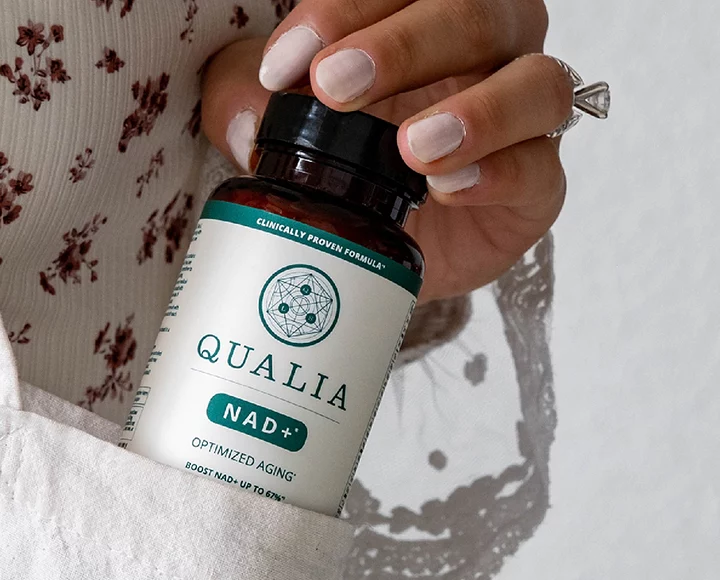Tangy. Crunchy. Teeming with gut-friendly bacteria. Sauerkraut is one of our favorite probiotic-rich foods. Not into it? You probably haven’t tried it homemade!
This homemade sauerkraut recipe from our friends at Free People is as delicious as it is pretty — and she’s definitely a looker. Anti-inflammatory turmeric gives the kraut a gorgeous golden hue. An assortment of veggies make this recipe more fun than your standard, and the addition of apples is a bright and delicious surprise.
Make a batch of this homemade sauerkraut when you’re feeling crafty or have extra farmers market veggies that need to be used up. Pile it high on veggie bowls, in wraps and by the forkful…
Not just a condiment anymore, this sour shredded cabbage dish is perfect for accompanying sandwiches, salads, to top off rice, or to savor on its own.
Before beginning your batch, keep in mind that cleanliness throughout the fermentation process is very important. Hot water and soap is sufficient for cleaning jars and measuring tools, but ensure that they are rinsed completely. Soap residue can inhibit the growth of the beneficial bacteria that you are trying to manifest. (This process is different then “canning” when you are pasteurizing and killing all of the beneficial bacteria that naturally occurs on vegetables. In that process it is important to completely sterilize jars.)
An equally important consideration when making your own fermented foods? HAVE FUN! Your only assurance should be utilizing the correct ratio of salt in your ferment. Feel free to experiment with different vegetable and spice combinations as you grow more comfortable. Our friend and local chef Greg Glowatz generally ferments at a percentage of 2.5% Celtic sea salt. Using a digital kitchen scale with a kg setting (he finds it much easier to make the calculations in grams and kilos than in pounds and ounces), simply weigh your prepped vegetables in grams (minus the weight of your jar or bowl) and then multiply that by .025 to find how many grams of salt you should add to your mix.
Gather Your Tools
A German Style Fermentation Crock with Weights is Chef Greg’s preferred vessel for fermenting shredded sauerkraut — it keeps the light out which enables you to keep a crock on your counter. Also, this style of crock has a water seal in which you simply pour water and top up every few days. It keeps oxygen out of the crock while allowing gasses from the fermentation process to be released. Check Out
You will also need a knife and cutting board to shred up your veggies. You can also use slicing attachments on your food processors or mandolin slicers but a knife will do just fine. Check OutYou will need a digital kitchen scale that weighs up to 5 Kg. Check Out
You will need a pickle packer or wooden tamper to compact your kraut into its fermentation vessel. Check Out
One final necessity is a large mixing bowl in which to mix your shredded veggies with salt. Check Out
Turmeric Apple Veggie Kraut
Ingredients:
1 head cabbage
1 small head cauliflower
3 carrots
3 stalks celery
1 Fuji apple
1 piece ginger
1 piece turmeric
Celtic sea salt
Directions:
It isn’t necessary to scrub your vegetables. It’s best to rinse visible dirt and make sure there is no sand or grit but besides that, some naturally occurring bacteria from the soil is helpful to begin the process.
Shred your vegetables. Fine or thick doesn’t matter; however, the thinner you slice them the faster they will soften in the fermentation process.
Remove the cores from the cauliflower and cabbage and slice very thin. Reserve outer cabbage leaves to place on top of kraut when you add to your vessel.
Halve the celery and carrots (unpeeled) and slice very thin on a bias. Cut the apple in matchsticks. Finely grate peeled ginger and turmeric. Add about one tbsp of each or as your taste prefers.
Once your veggies are prepped, the next step is weighing them. Place a large empty mixing bowl on your scale, set on kilograms, and register its weight. Then press 0. This will take the weight of the bowl out of your salt equation. Next, fill the bowl with your shredded and grated ingredients. For instance, when Chef Greg weighed his prep, it registered at 2000 grams (2 Kg). after which he multiplied 2000 by .025 to find his preference of 2.5% brine, which equals 50 grams of salt. Keep in mind, with this equation you can ferment as much or as little as you want.
Next, add salt to your vegetables and massage with impeccably clean hands. After a few minutes, notice that the natural moisture from all of the vegetable will be drawn out from both the salt and the agitation. This is what you want to experience! Next you will need to transfer your vegetables into a fermentation crock or jar.
In this step it is important to first transfer your vegetables in as neatly as possible, and then top with the liquid that came out during massaging process. Next, Greg likes to use a pickle packer or wooden tamper to pack down the kraut. Then place reserved cabbage leaves on top to help keep the kraut below the level of the brine. Add ceramic weights. Wipe away any brine or vegetables from the sides of the crock so that everything is safely submerged and will prevent any mold from forming. Add lid to your crock and seal with filtered water. Set the crock aside where you can see it, to ensure that you remember to add water to the seal when it evaporates.
Your kraut may sit for at least a month before it’s ready to eat. Some people wait several months or even years. Experiment and find the time/taste that works best for you. Enjoy your delicious kraut and reap the benefits of introducing probiotic foods into your diet!












